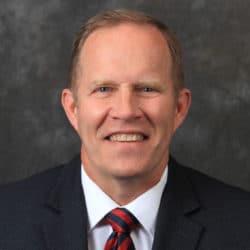
Let’s say you’re an electrical contractor. One of your employees bumps into an unoccupied scaffold on a construction site and destabilizes it. Which actions should you take to ensure the safety of workers and avoid liability?
A. Move everyone out of the way when painters get on the scaffold.
B. Fix the scaffold.
C. Warn everyone who is at risk.
D. Report the incident to the general contractor.
If you answered C and D, you’re correct. Responsibility and liability on a job site with several employers depends on each employer’s role in the project.
In 1999, the Occupational Safety and Health Administration (OSHA) enacted a multi-employer worksite doctrine that bases safety responsibility on the role various employers play on a construction project. In general, employers can be held responsible for workers other than their own and more than one employer can be cited for the same violation.
OSHA identifies four types of employers who are potentially citable for hazardous conditions that violate federal standards:
- The Exposing Employer is one whose own employees are exposed to a hazard. These employers must exercise “reasonable care” to correct hazards if they have the authority to fix them. OSHA requires frequent and careful inspection to prevent hazards and to promptly remedy them. What if you don’t have the authority to correct a potentially dangerous situation? You must take all feasible measures to minimize employees’ exposure and ask another employer to correct the hazard. If there is imminent danger, the exposing employer must remove its employees from the job.
- The Creating Employer is the one who caused the hazard. In this case, you must keep all employees — not just your own — away from the hazard and notify the employer who controls the work site. If you have the authority to correct the hazard, you must do so promptly.
- The Correcting Employer is the one responsible for fixing a hazard. This may be any employer on the site who is authorized to correct the problem. For example, as electrical contractor, you wouldn’t be authorized to fix the scaffold in the incident described above, but you would be authorized to correct an electrical hazard.
- The Controlling Employer or Manager has authority to manage all the other (exposing, creating and correcting) employers. This employer is citable for failing to prevent, discover or correct a hazard. In the absence of a contractually defined role, the controlling employer is the one exercising supervisory authority over the worksite.
To limit exposure, here are some common-sense rules to follow.
- Before anyone picks up a tool, make sure contract terms define the worksite responsibilities of the facility owner, contractors and subcontractors. Identify the creating, exposing, correcting and controlling employers.
- Make certain that actions on the worksite conform to the terms. Renegotiate contract terms before doing work outside the scope of the contract.
- Pre-qualify subcontractors and screen leased and borrowed employees. Make sure they’re adequately trained and outfitted with personal protective equipment.
- Remove your employees from areas potentially hazardous to health or safety.
- Document your requests when reporting hazards to the controlling employer and asking for corrective action.
- Stop work in the event of imminent danger.
- Instruct supervisors not to take control of other employers’ people or work. Behaviors that imply control can increase your liability.
- During an OSHA inspection, do not waive your rights or admit legal liability.
Please contact Tom Bailey via our online contact form for more information.
Councilor, Buchanan & Mitchell (CBM) is a professional services firm delivering tax, accounting and business advisory expertise throughout the Mid-Atlantic region from offices in Bethesda, MD and Washington, DC.



